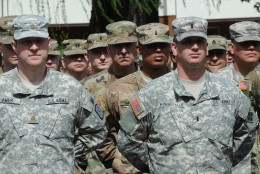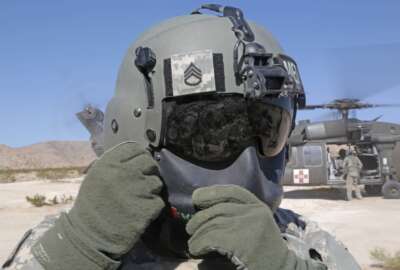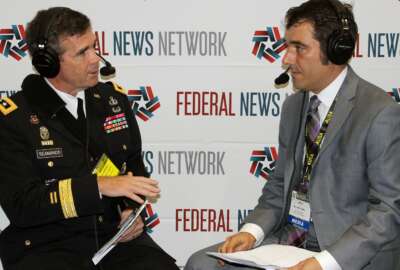
Hundreds of aviators may have joined the Army for longer than they expected
Roughly 600 officers are implicated in a misunderstanding of Army policy that could require them to serve for three years longer than they'd planned
Hundreds of officers in the Army’s aviation community may be legally required to stay in the military three years longer than they’d planned and been told to expect, thanks to a paperwork snafu that began several years ago and went unnoticed until this year.
The confusion surrounds a unique feature of the somewhat-small cadre of the Army’s commissioned officer corps who also serve as aviators. Although all officers take on obligations to stay in the Army for a certain period of time, aviation officers owe the service three additional years once they’ve graduated flight school, according to a strict interpretation of Army regulations.
But that interpretation has been applied unevenly, it turns out. Some officers have been allowed to leave the Army without incurring the additional three-year obligation, while others are only finding out now that they’ll need to stay on active duty for much longer than they planned to.
Officials said Thursday that they are now in the process of communicating with roughly 600 currently-serving officers who they believe were caught up in the policy misunderstanding.
It rose to the surface only recently, when some aviation officers learned they were being required to stay for the extra three years, while peers who graduated from West Point or ROTC in the same year groups were not.
“It was brought to our attention that an officer separated and the calculation of the active duty service obligation was not correctly applied to that officer. So when we went back and reviewed the record, we said, ‘Okay, we need to look across the entirety of the force,’” Lt. Gen. Douglass Stitt, the Army’s deputy chief of staff for personnel told reporters Thursday afternoon. “We are fixing those errors. And we are in communication with the unit leadership and impacted officers. Our overall goal to correct this issue is to provide predictability and stability for our soldiers.”
The problem was first reported by Army Times earlier on Thursday. That publication cited documents that reportedly show the Army’s own aviation branch managers had told the affected officers they wouldn’t be subject to the additional three-year service obligations, and letters to Congress reporting that the Army’s communications with those officers were filled with “contradicting statements.”
Army officials, however, said the officers involved had each signed contracts that “clearly state” what the service requirements were: All aviators owe the Army six years of obligated service once they had graduated flight school, but a subset of officers who enter the aviation community by virtue of having selected aviation as their “Branch of Choice” (BRADSO) owe three additional years of service.
But the Army’s own personnel officials appear to have misunderstood the requirements too. Entries were placed into at least some members’ personnel files that indicated that the additional obligation would not apply to them, said Maj. Gen. Thomas Drew, the commander of Army Human Resources Command.
“We incorrectly put the active duty service obligation in there, by not incorporating the branch — the additional three consecutive years of active duty service obligation. And then we noticed that we also had some that applied [for exceptions to policy] and some that didn’t,” Drew said.
Because of the errors, as of now, the Army believes roughly 20 aviation officers have been allowed to leave the service before their service obligations were supposed to expire. Those officers will not be asked to return to service, Stitt said.
The problem also does not affect the Army’s warrant officers, who comprise the majority of its aviators, because those soldiers sign on as pilots without other service obligations to complicate the picture.
But the status of the remaining 600 officers remains unclear.
“I would ask for a couple of weeks to run this down,” Stitt said. “By the end of end of May, we would hope to have our arms around this population, working with commanders and impacted officers. We would like to move quicker, but we’ll move as quick as conditions allow as we contact the force.”
Drew said he intended to handle each of the 600 officers impacted by the Army’s errors and miscommunications on an individual basis.
“I do that with compassion and empathy. It’s three years, but I don’t want to treat it like it’s a prison sentence,” he said. “I want to take these case-by-case, and do the right thing for these soldiers and families and for the Army. That’s my methodology as I go forward.”
Copyright © 2025 Federal News Network. All rights reserved. This website is not intended for users located within the European Economic Area.
Jared Serbu is deputy editor of Federal News Network and reports on the Defense Department’s contracting, legislative, workforce and IT issues.
Follow @jserbuWFED
Related Stories





